World’s incredible places that are off limits
Places to admire from afar
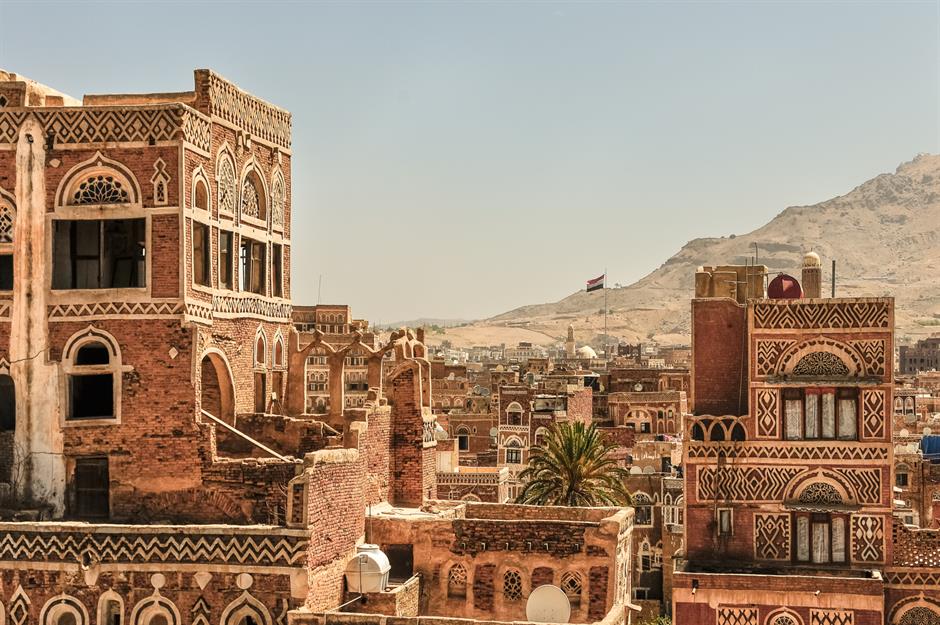
There are many reasons why destinations might be off limits to visitors and tourists. Some countries and regions are considered too dangerous to visit due to conflict, in which case your travel insurance may not cover you and your consulate likely won't be able to support you.
Others, such as specific archaeological and culturally important heritage sites, have been closed to save them from irrevocable damage.
Click through this gallery for gorgeous photos of places we may never see in person...
Haiti

Haiti, which shares the island of Hispaniola with the Dominican Republic, is home to important 19th-century monuments, pastel-coloured hillside houses and a beautiful coastline (pictured). But visiting the Caribbean nation is currently off limits due to ongoing instability and gang violence.
The country has declared many state of emergencies over the past few years, the latest beginning in August 2025 and lasting three months.
Haiti
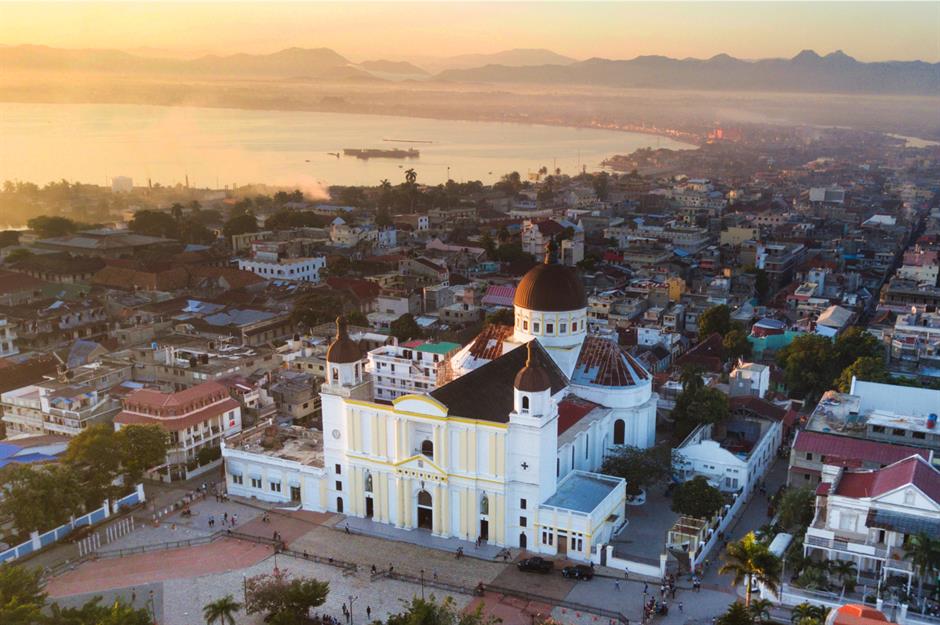
The US State Department has a "do not travel" warning in place due to the risk of kidnapping, crime and civil unrest. The country has previously been hit by severe weather events and natural disasters, including a catastrophic 7.0-magnitude earthquake in 2010, Hurricane Matthew in 2016 and deadly floods in 2023.
These caused huge devastation, though many of the country’s landmarks – including the Cathedrale Notre-Dame de l'Assomption (Our Lady of the Assumption Cathedral, pictured) in Cap-Haitien – remain remarkably intact.
Haiti
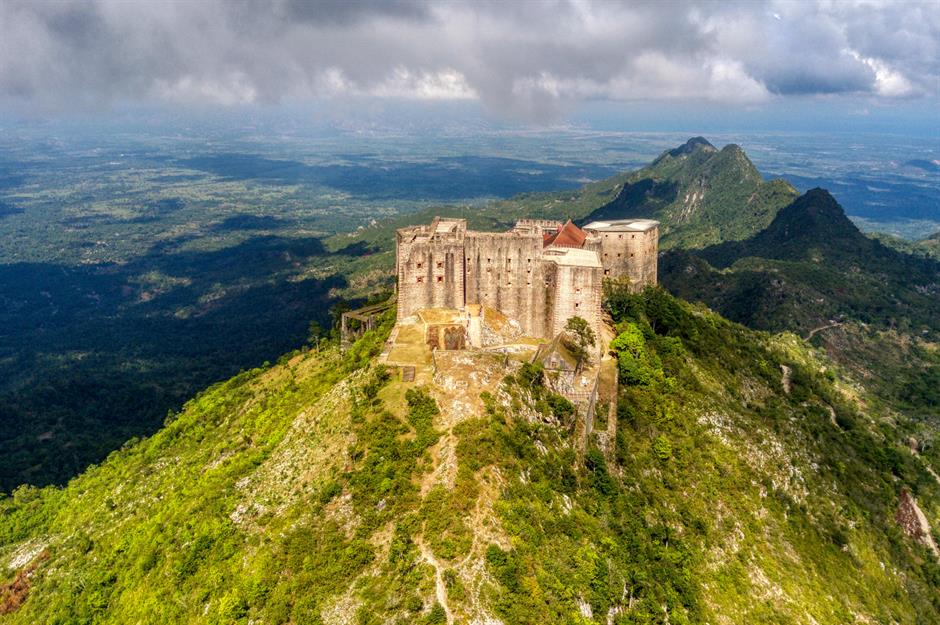
Other beautiful buildings include the ruins of Sans-Souci Palace, the Baroque former royal home of King Henri I, who was key in the Haitian Revolution that won independence from France in 1804. And one of the most stunning landmarks is the Citadelle Laferriere, an early 19th-century fortress perched on the Bonnet a l'Eveque mountaintop in Nord.
The citadel, pictured, was originally built on the orders of Henri to protect the newly independent country against French invasion.
Gruinard Island, Inner Hebrides, Scotland, UK
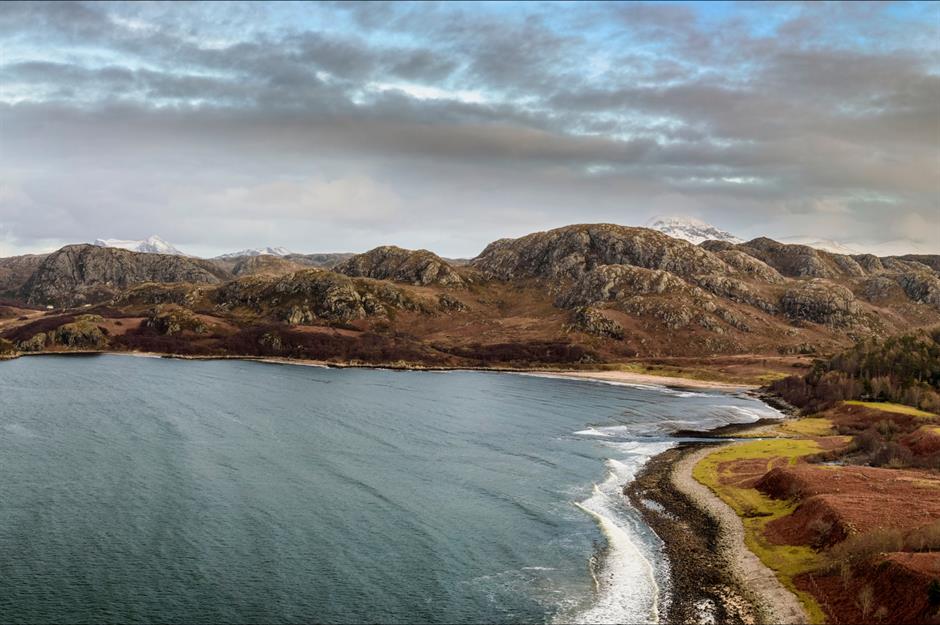
This tiny island might look unassuming, but its nickname betrays its dark past. Known as Anthrax Island, Gruinard was used by the British Armed Forces during World War II as a biological warfare testing site.
It was quarantined for years and finally declared safe in 1990, though the island has remained uninhabited. In 2022, a wildfire raged across the length of the island and scorched its rugged shores, further adding to its reputation as a hostile place that many are still reluctant to set foot on.
Timbuktu, Mali
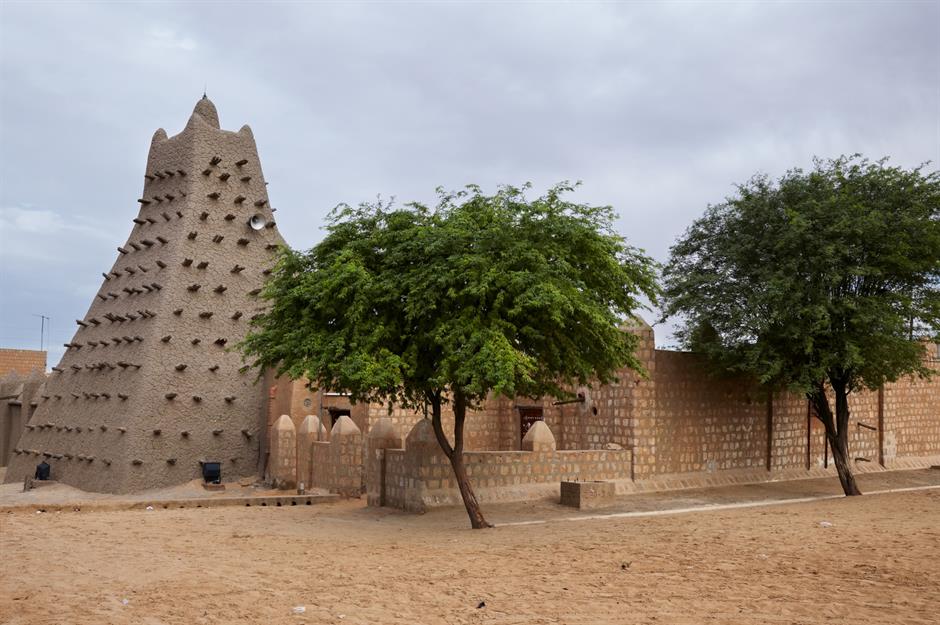
The ancient city of Timbuktu, capital of the Tombouctou region, glimmers on the edge of the Sahara Desert and is a designated UNESCO World Heritage Site. Sadly, the British Foreign Office (FCDO) advises against all travel to this area, just as it does the rest of Mali.
The US State Department has a blanket "do not travel" advisory in place for the entire country due to crime, terrorism and kidnapping.
Timbuktu, Mali
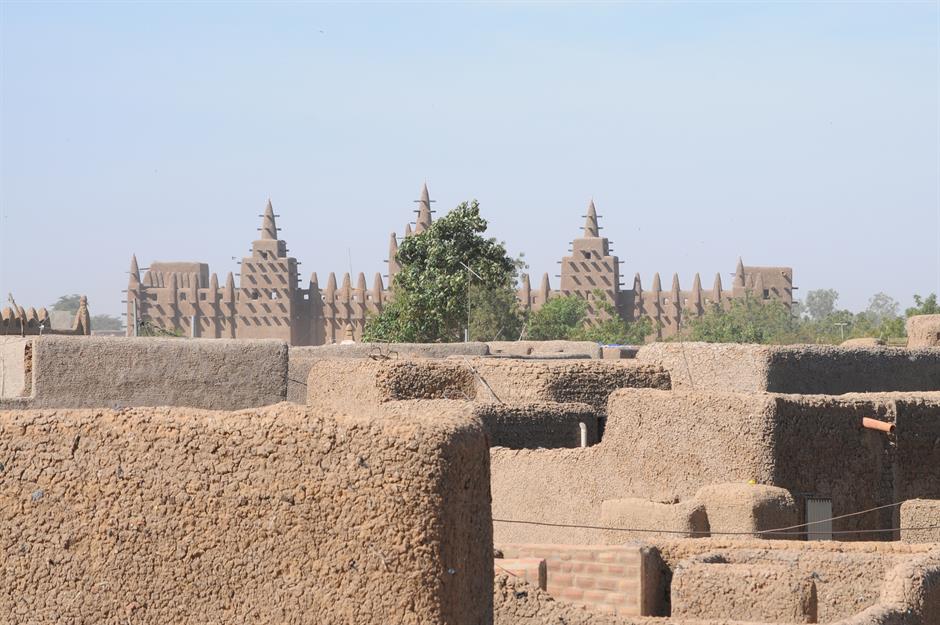
Founded in the 5th century, the desert city of Timbuktu was an important hub of Arab-African trade and flourished thanks to a marketplace where manuscripts, salt, gold, grain and cattle were exchanged. It was also the location of one of the world’s first universities, established in the 12th century.
At one time there were 180 Koranic schools here, attended by around 25,000 students.
Timbuktu, Mali
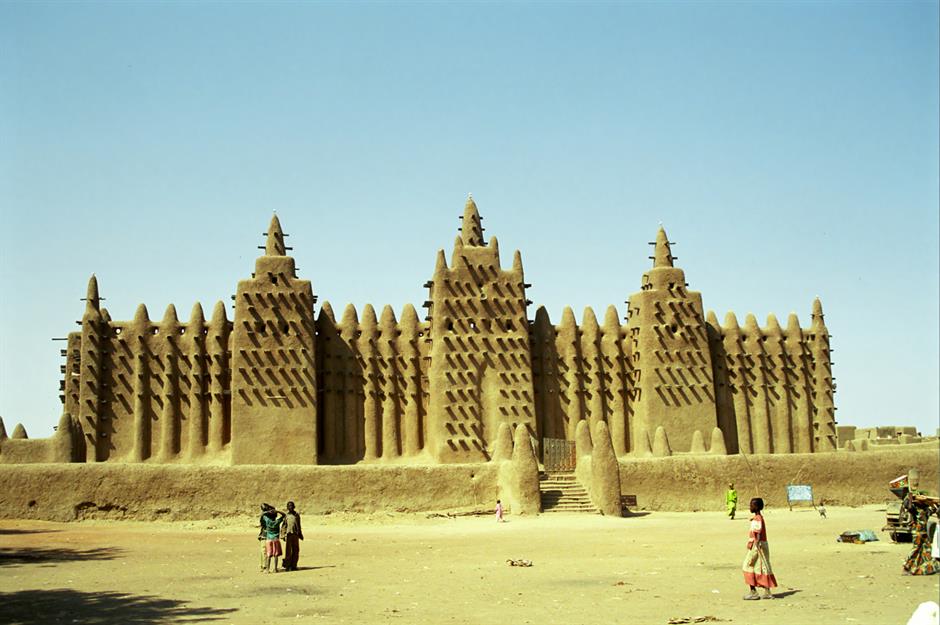
One of the most important structures is Sankore Mosque, built in the 14th century and attached to the Koranic Sankore University (pictured). Along with Djingareyber and Sidi Yahia, it’s one of Timbuktu's three mud and timber mosques that require constant restoration and are deemed endangered by UNESCO due to 'desertification' – being damaged and encroached upon by desert sands.
Some of Timbuktu’s ancient mausoleums and manuscripts were also destroyed following a military coup in 2012.
Afghanistan
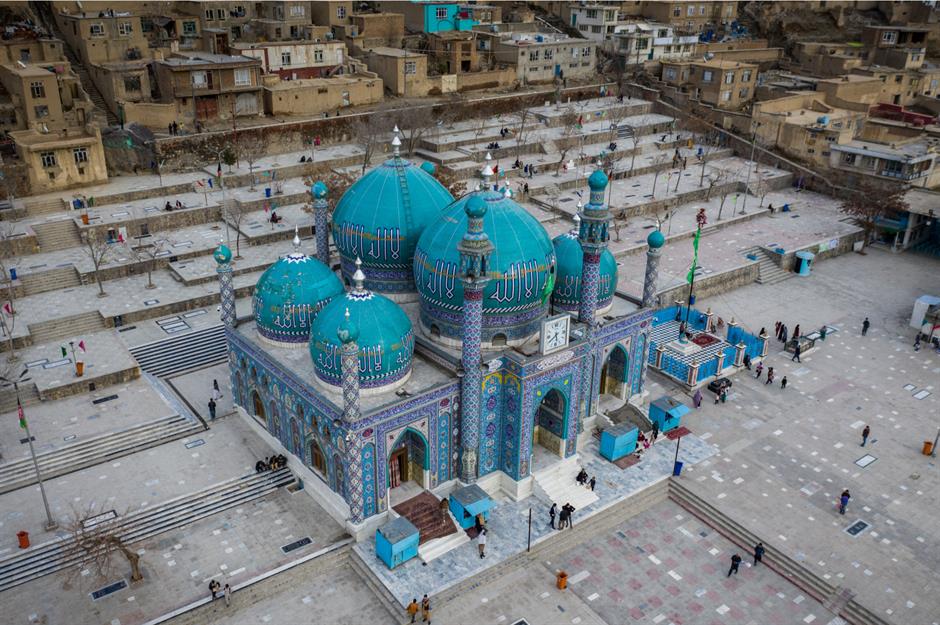
There are travel warnings in place for all regions of Afghanistan, which has been largely inaccessible for decades due to ongoing conflict. The FCDO advises against all travel for security reasons, while the US State Department also has a "do not travel" warning in place.
The vast country is rich in culturally important landmarks and natural beauty, with a mix of ethereal landscapes, ancient monuments and ornate architectural structures such as the Sakhi Shrine (pictured) in the capital Kabul.
Afghanistan
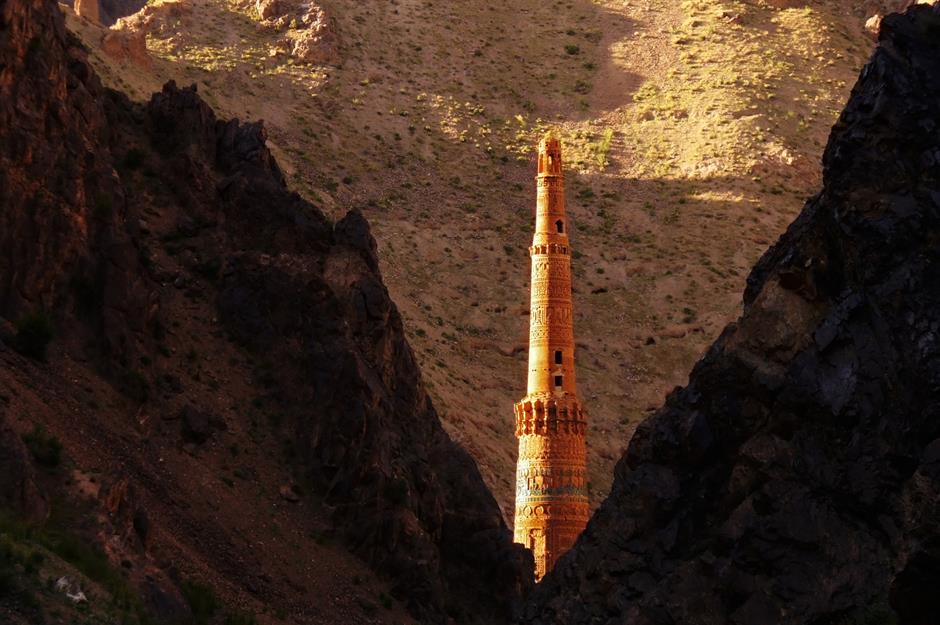
Among the country's most important structures is the Minaret of Jam, pictured, which pierces the sky at 213 feet (65m) high and forms part of the Minaret and Archaeological Remains of Jam World Heritage Site. The intricate tower, in brick and blue tile, was built by acclaimed architect Ghurid Sultan Ghiyas-od-din in the Shahrak District of Ghor Province.
The region, characterised by deep river valleys, mountains and jagged rock formations, is extremely remote and almost inaccessible in itself.
Afghanistan
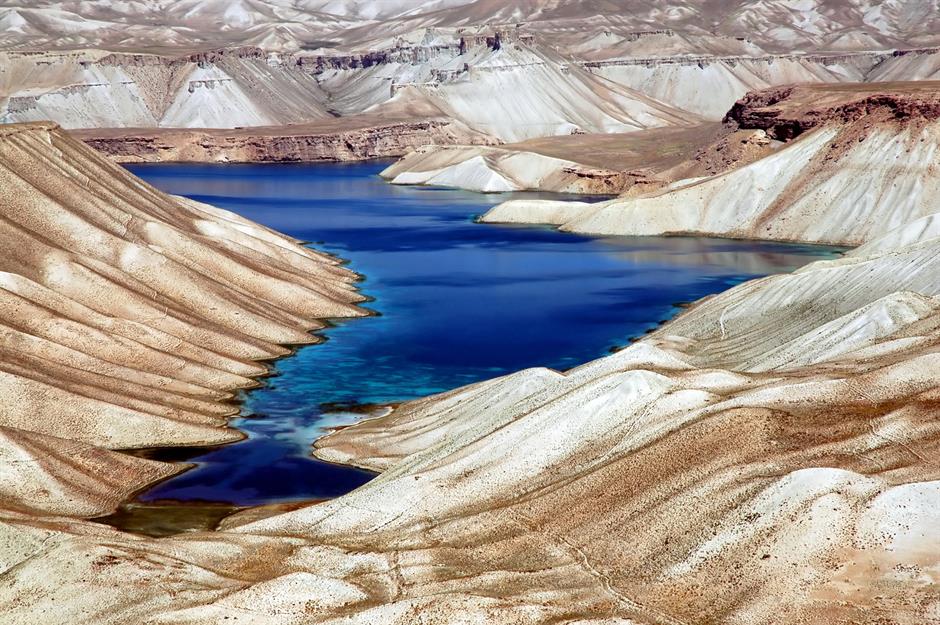
The entire country has more than its fair share of gorgeous landscapes, though perhaps one of the loveliest is Band-e Amir National Park (pictured). In the central Bamyan Province, it’s made up of six sapphire and turquoise-hued lakes, naturally separated by travertine dams (created by mineral deposits) and ringed by the Hindu Kush mountains.
Its vastness and breathtaking beauty has led to comparisons with America’s Grand Canyon.
Somalia
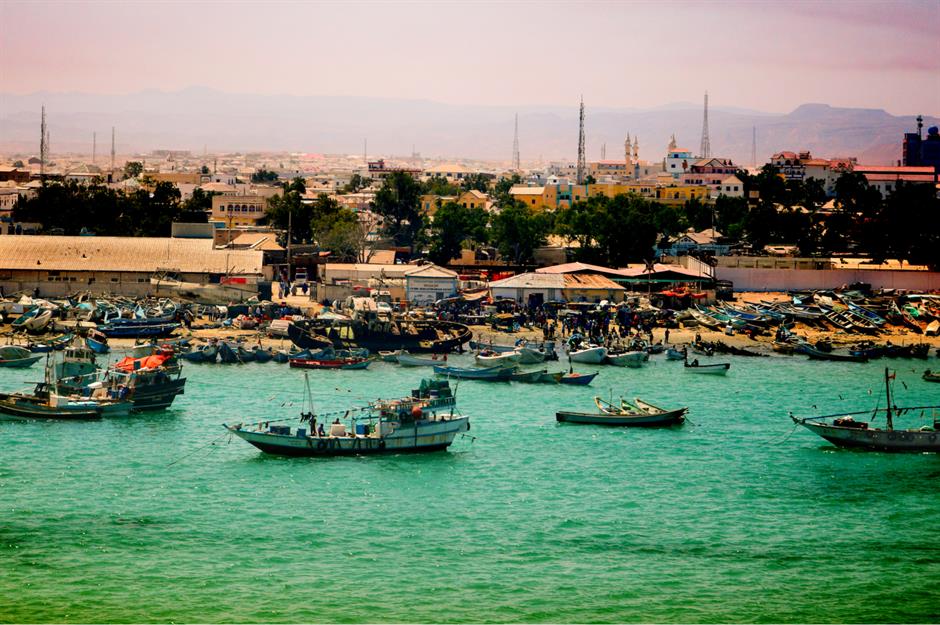
As per the latest FCDO advice, travel to all of Somalia and the three eastern regions of Somaliland (a breakaway territory that declared itself independent in 1991) is off limits. All but essential travel to Somaliland's three western regions is also discouraged.
Located in the Horn of Africa, Somalia is a real beauty, with architecturally rich cities surrounded by mountains and the longest coastline on mainland Africa. Pictured is the seaport of Bosaso in the northeastern Bari province.
Somalia
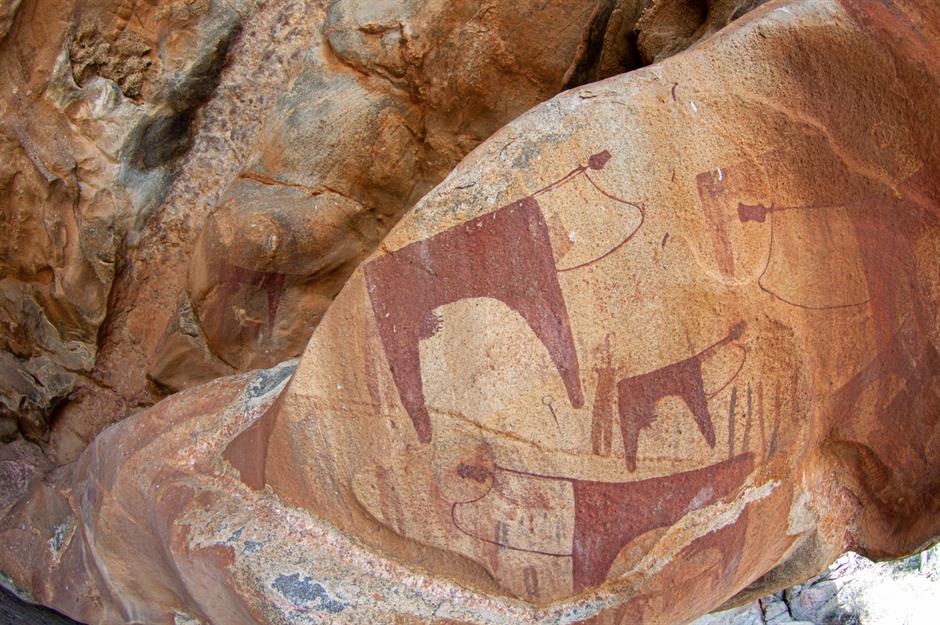
Somalia also harbours some of the best-preserved and, it’s believed, earliest rock art on the continent, particularly in the caves of Laas Geel (pictured). The caverns are laced around a granite outcrop in the Maroodi Jeex region of the country, between the Somaliland cities of Hargeisa and Berbera.
The paintings of pastoral scenes, cattle, dogs and wildlife including giraffes are believed to be between 5,000 and 10,000 years old.
Somalia
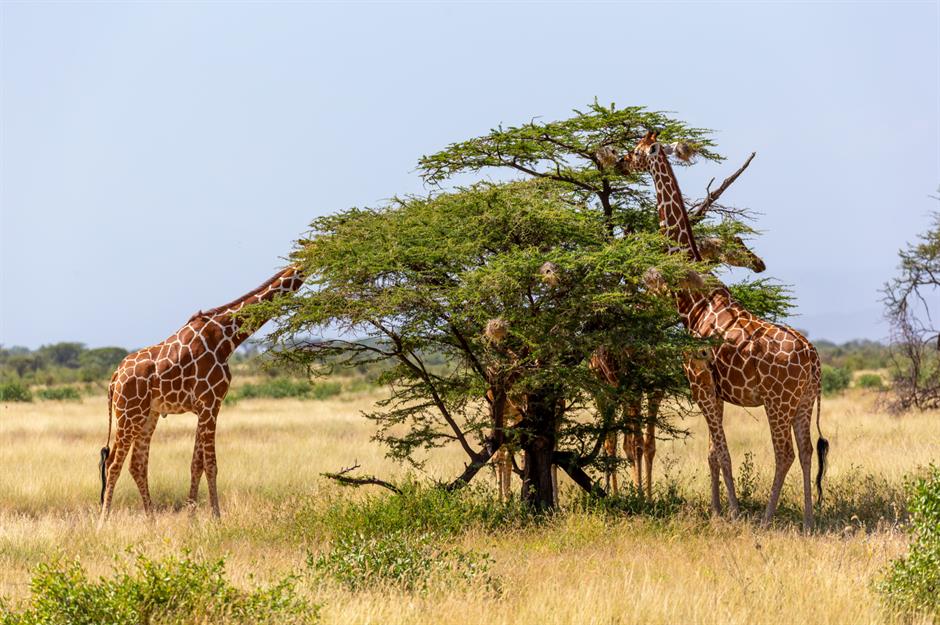
Speaking of giraffes, the lofty beauties – though no longer roaming the region where the cave paintings are found – typically graze on acacia trees elsewhere in Somalia, particularly close to its border with Kenya.
The country’s diverse wildlife also includes lions, cheetahs, African bush elephants, the Somali wild ass and zebras. Lag Badana-Bushbush National Park, by the southern coast, is home to monkeys, hyenas, gazelles and rich birdlife.
Sudan
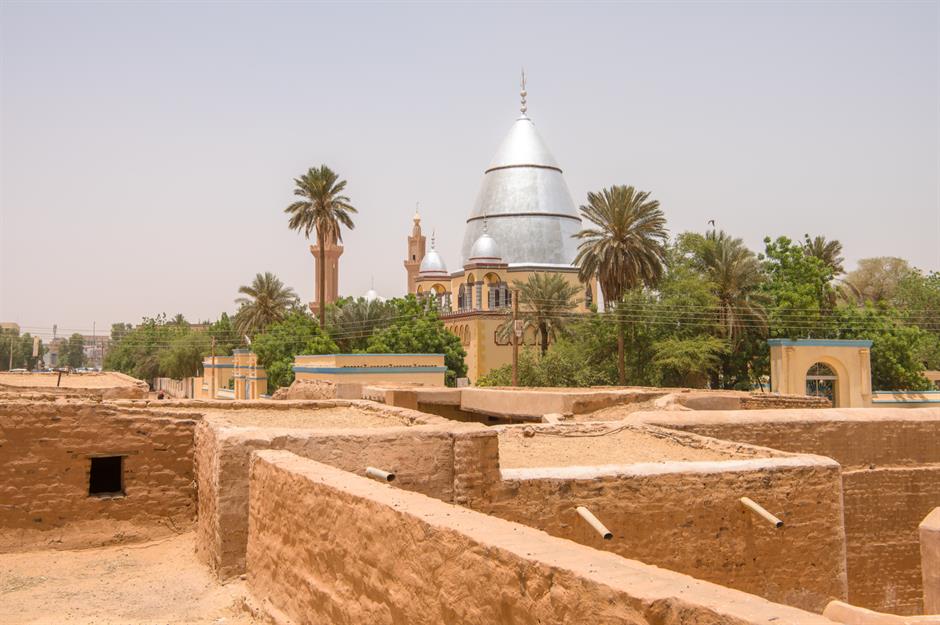
The US State Department advises against all travel to the North African country of Sudan thanks to the threat of armed conflict, civil unrest, terrorism, crime and kidnapping, because it's currently in the grip of a civil war that has left more than 10 million people displaced.
This means that the country’s ancient pyramids – there are more here than in Egypt – are off limits to tourists for the foreseeable future. Pictured here is the old town of Sudan's capital, Khartoum.
Sudan
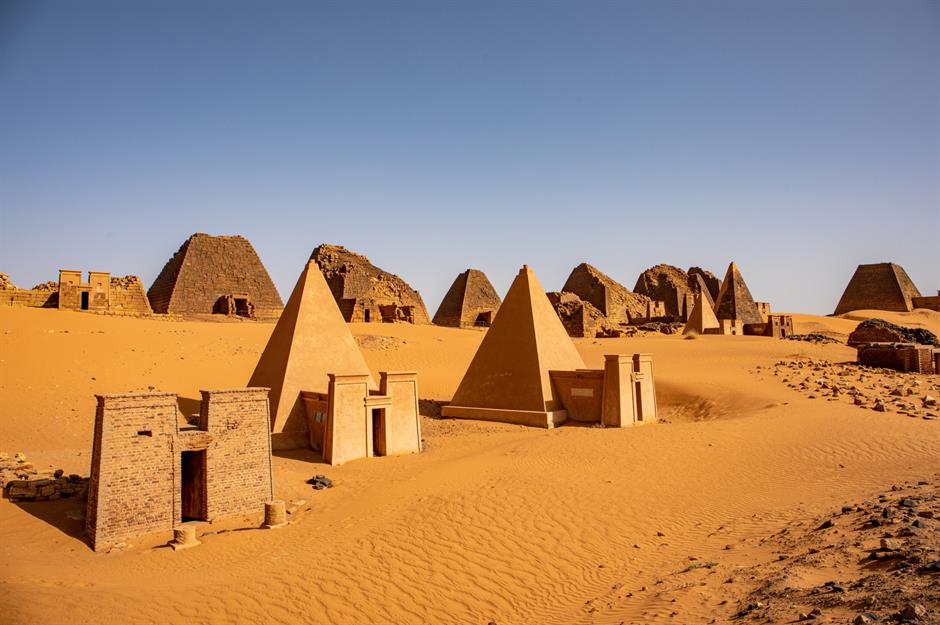
There are nearly 200 small (relative to those in Giza) yet perfectly formed and beautifully ornate pyramids at Meroe, to the east of the River Nile and northeast of Khartoum. The burial chambers are scattered among the dunes, creating a breathtaking blend of natural and man-made sculptures.
These architectural marvels were built by the rulers of the ancient Kushite kingdom, a major power in the ancient world from the 8th century BC to the 4th century AD.
Sudan
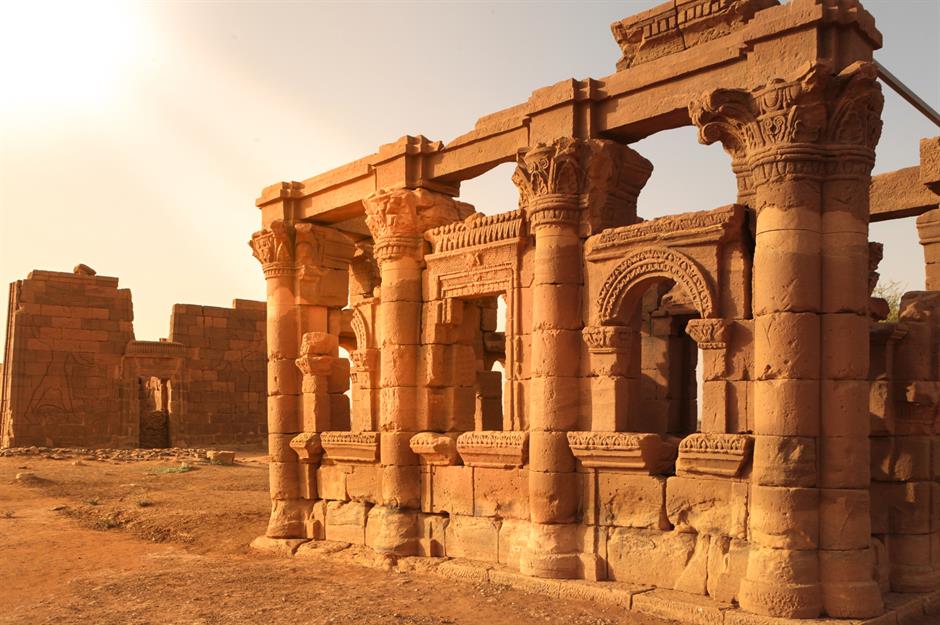
West of Meroe are the archaeological ruins of Naqa, an ancient city that was part of the Kushite kingdom. Naqa is known for its impeccably preserved temples including Amun and Apedemak (Lion Temple), which is prized as a classic example of Kushite architecture.
There’s also a Roman kiosk, whose architecture and decorative elements suggest Pharaonic Egyptian, Hellenistic and Kushite influences.
Lascaux Cave, France
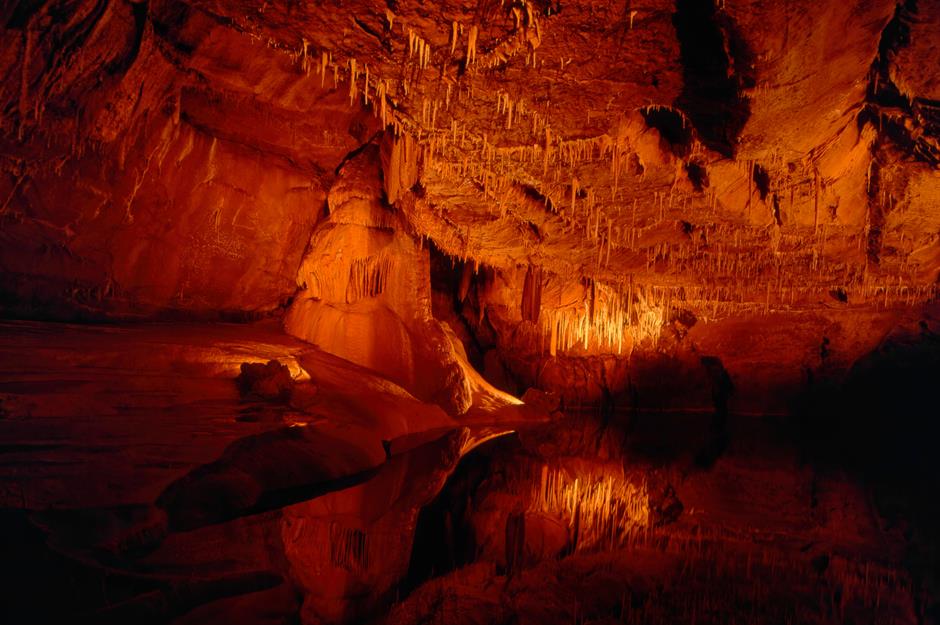
The prehistoric paintings of Lascaux Cave, near the village of Montignac in northwestern France, were stumbled across by four young boys who were exploring the area in 1940. What they found were some of the world's finest examples of Palaeolithic cave painting, depicting large mammals such as bulls, bison, cats, a rhino and a bear.
Fossil finds have confirmed that the animals in the paintings would have roamed the area at the time the images were created – between 17000 and 15000 BC.
Lascaux Cave, France
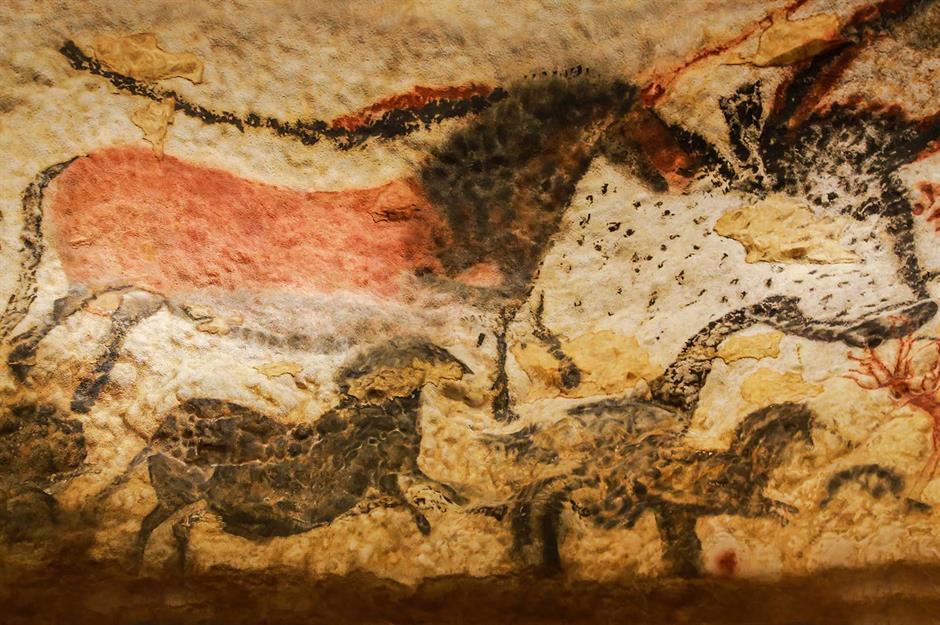
The original cave was closed to the public in 1963 because large volumes of carbon dioxide from human breath were causing the paintings to deteriorate.
Now part of a UNESCO World Heritage Site, Lascaux remains closed to the public to preserve the paintings, but a complete replica of the original cave sits nearby, with tours and interactive exhibits that are almost as good as the real thing.
Tigray, Ethiopia
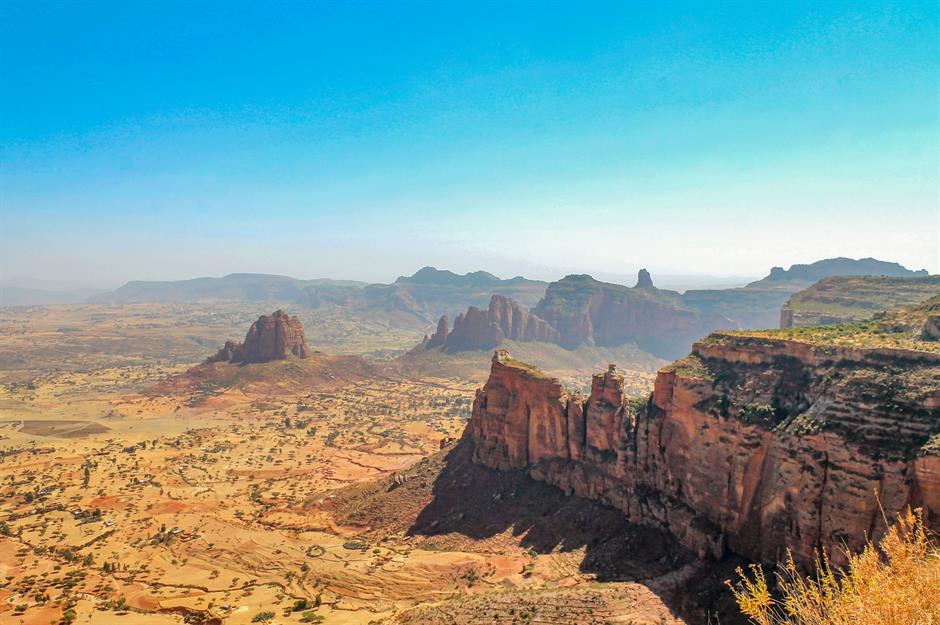
The northern highland region of Tigray is rich with cultural and religious treasures, but the threat of armed conflict and civil unrest has resulted in a "do not travel" warning from the US State Department and various travel advisories from the FCDO, alongside other warnings for several other areas of Ethiopia.
Tigray was particularly badly affected by two years of war between 2020 and 2022, and remains extremely vulnerable even though the conflict has officially ended.
Tigray, Ethiopia
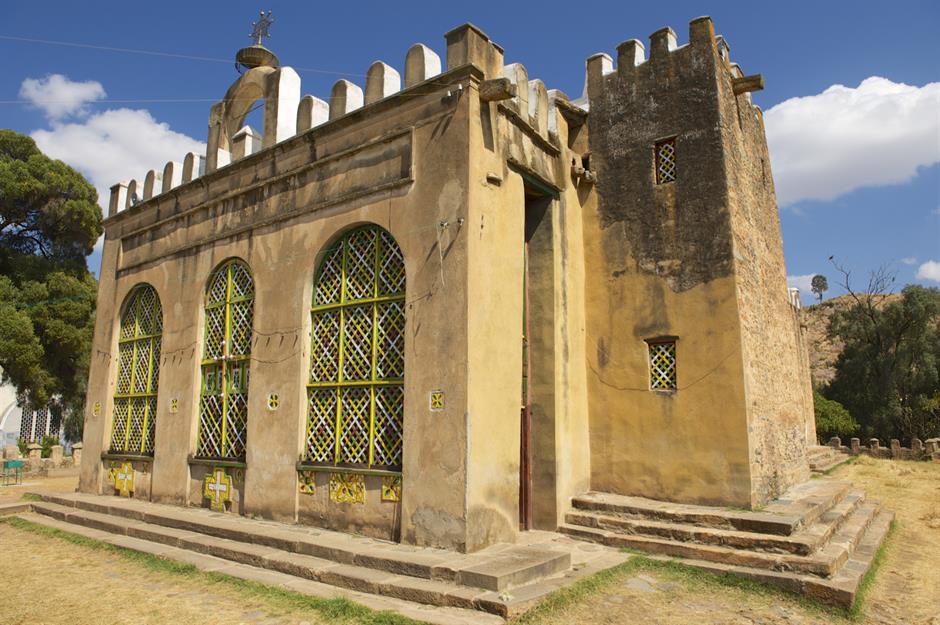
Tigray’s most famous attraction is the UNESCO archaeological site of Aksum, known for its sky-piercing obelisks and the St Mary of Zion, a Christian church believed to have harboured the biblical Ark of the Covenant (now said to be kept in the neighbouring Chapel of the Tablet).
Other important religious sites include the remote, clifftop 6th-century monastery of Debre Damo, which was attacked and looted in early 2021.
Ilha da Queimada Grande, Brazil
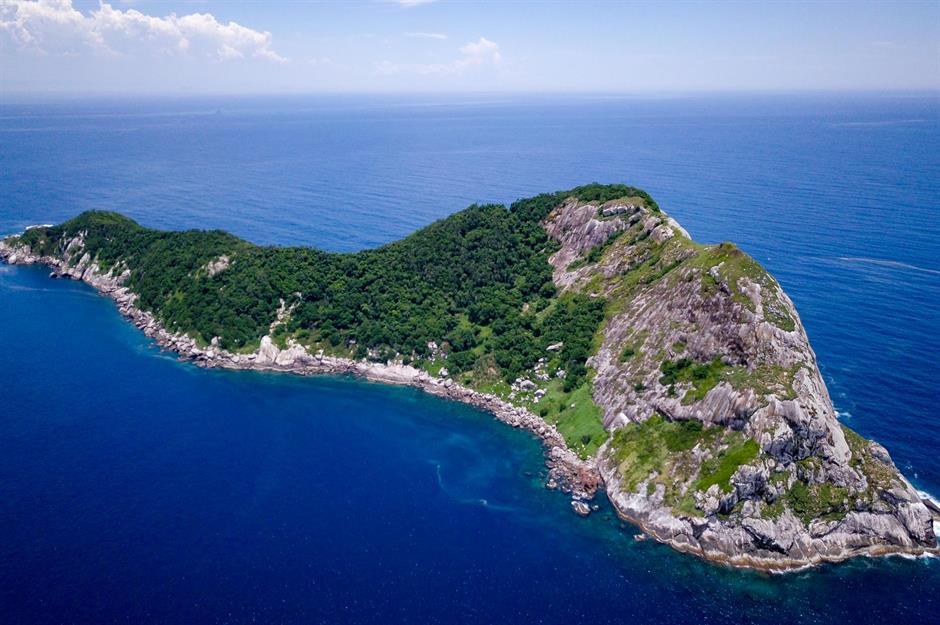
This verdant island, around 20 miles (32km) off the coast from Sao Paulo, is nicknamed Snake Island, and it’s got nothing to do with its shape. Ilha da Queimada Grande harbours one of the world’s deadliest species of snake – the golden lancehead viper, whose venom can tear through flesh.
There are between 2,000 and 4,000 of the vicious vipers here, which explains why the government has prohibited visitors. Only a select few scientists are allowed on the island to study the snakes every few years.
Myanmar
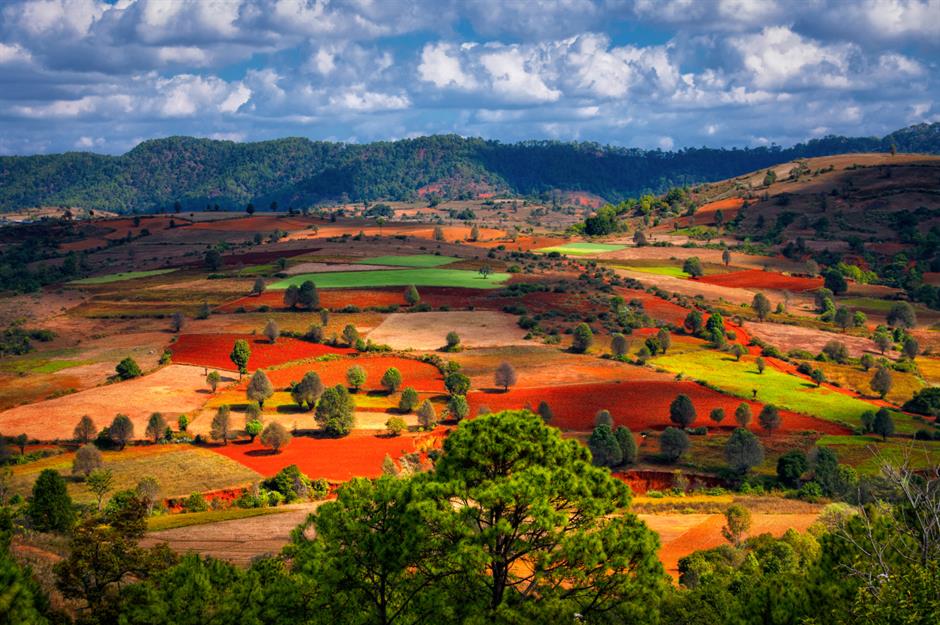
Myanmar has been in a state of civil war since a coup by a military junta in February 2021, and the US State Department has a "do not travel" warning in place for the country. The FCDO, meanwhile, advises against all travel to large swathes of the country, describing the conflict as "increasingly volatile".
Travel warnings were in place even before the junta took control, due to what the UN called the "textbook ethnic cleansing" of Rohingya Muslims. This photo shows a landscape in Shan State – one of the regions hit by the humanitarian crisis.
Myanmar
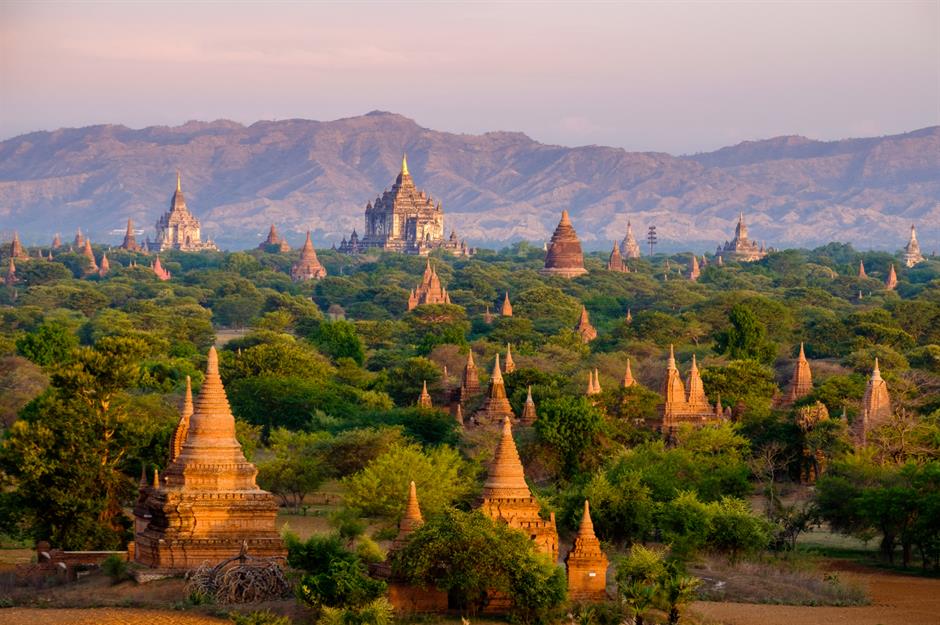
We may never get to experience Myanmar's most famous sites for ourselves, including the temples of Bagan pictured here. The historic capital of the Pagan Empire that ruled here between the 10th and 13th centuries, Bagan once held more than 10,000 Buddhist temples, monasteries and pagodas.
The 2,000-odd that remain today are an awesome spectacle, peeking above the trees in the verdant valley.
Myanmar
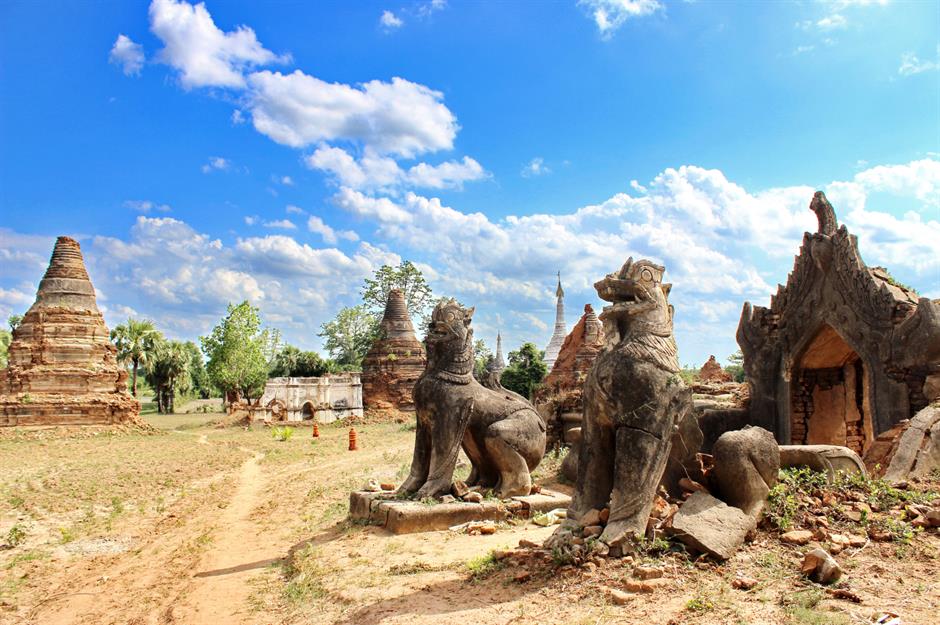
The ancient Pyu cities – dating back as far as 200 BC – of Sri Ksetra, Halin (pictured) and Beikthano are home to some of the world’s oldest Buddhist temples and were declared a UNESCO World Heritage Site in 2014.
The three brick-walled and moated cities remain only partially excavated but what has been uncovered includes the remains of palace citadels, burial grounds, water management features and monumental brick Buddhist stupas, such as the Payama Stupa at Sri Ksetra.
Libya
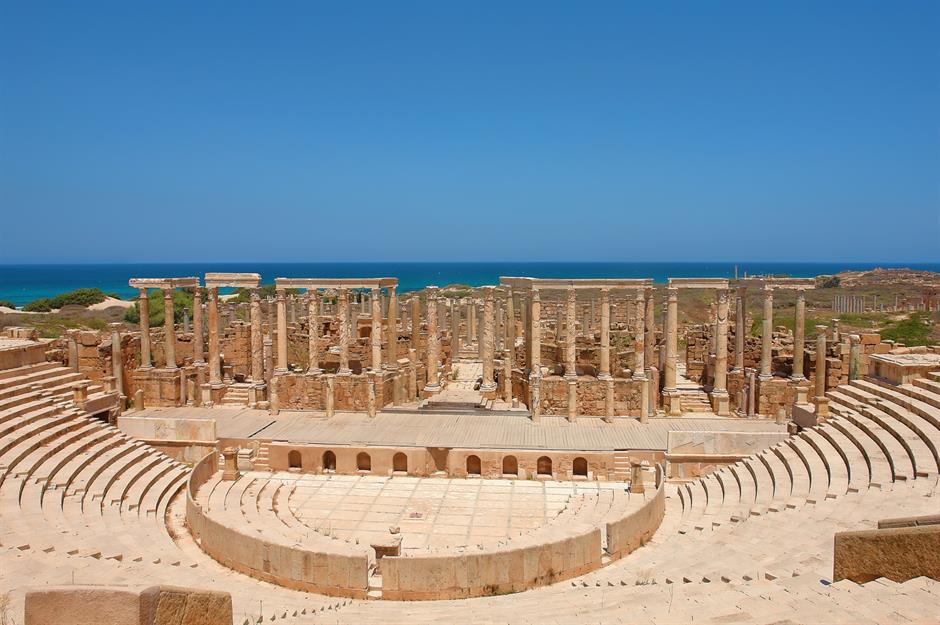
A FCDO warning against all travel to Libya had been in place consistently from 2014 to April 2025 due to military clashes, inter-militia fighting and what’s described as 'fragile' local security situations. It was then relaxed slightly to advise against all but essential travel to three cities – Tripoli, Benghazi and Misrata, however at the time of writing only Benghazi and Misrata are still on that list.
The North African country has a history stretching back to around 8000 BC, when the coast was populated by Amazigh people. It’s since been under Roman, Greek, Persian, Arab and Turkish rule, which has created a rich archaeological and architectural tapestry. One of its most famous sites is Leptis Magna (pictured) – imposing Roman ruins that sit on the country's Mediterranean coast.
Libya
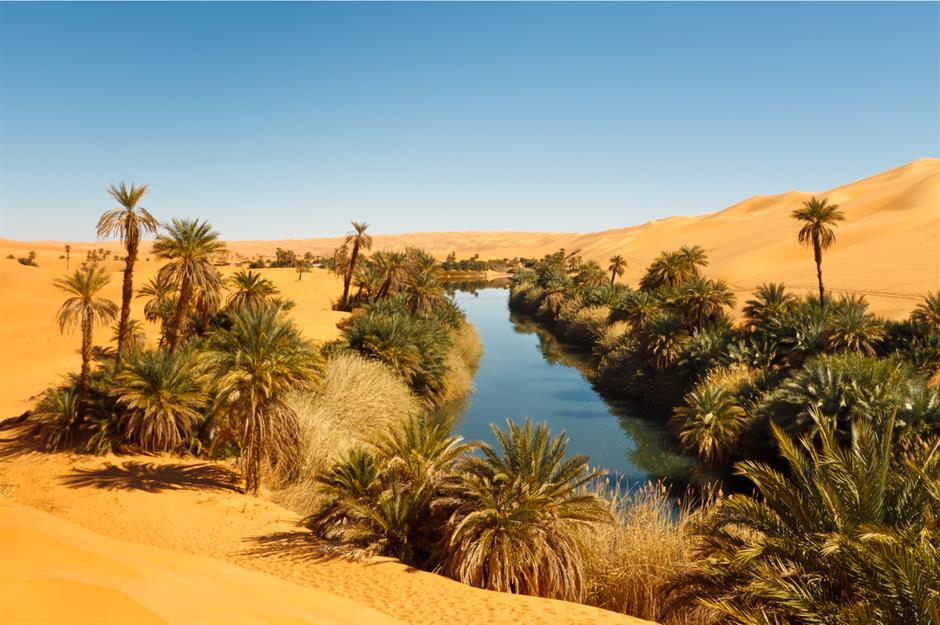
Dominated by an amphitheatre, Leptis Magna was originally founded in the 7th century BC by the Phoenicians. It was enlarged by Roman emperor Septimius Severus who was born here and ordered the construction of many of the large structures that still remain.
Other awe-inspiring sights include the ornate Gurgi Mosque, the ancient Roman Arch of Marcus Aurelius, the volcanic crater lakes of Waw an Namus, and Gaberoun, an oasis amid the Sahara's sculptural dunes (pictured).
Iraq
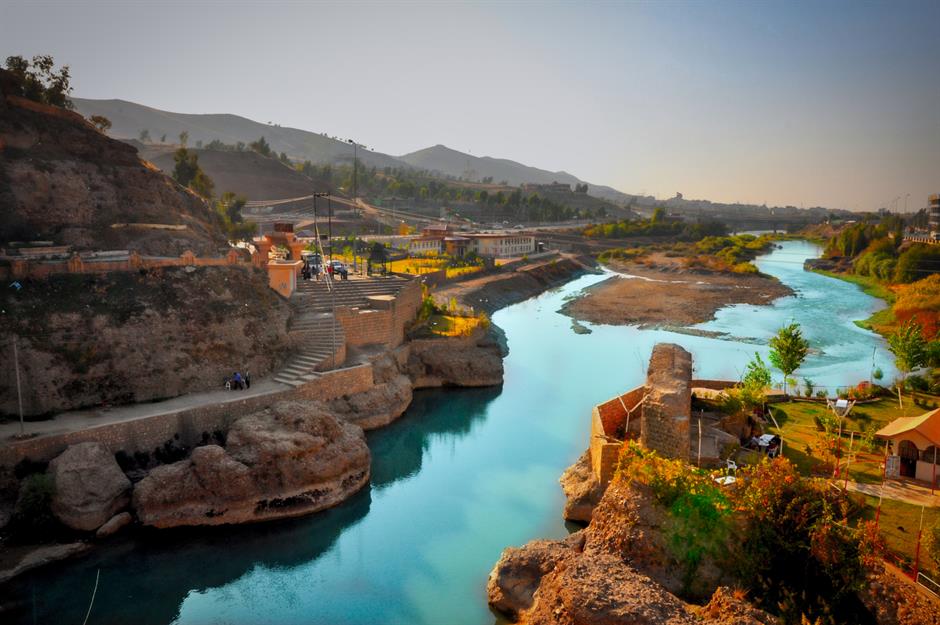
The US State Department urges Americans not to travel to any part of Iraq, while the FCDO advises against all travel to most of the country and all but essential travel to the rest. Travel has been severely restricted for the past few decades due to military conflict, which has left some areas peppered with IEDs (improvised explosive devices).
The country covers what was once known as Mesopotamia (Land Between the Rivers), where some of the earliest civilisations – including Sumer, Akkad, Babylon and Assyria – began.
Iraq
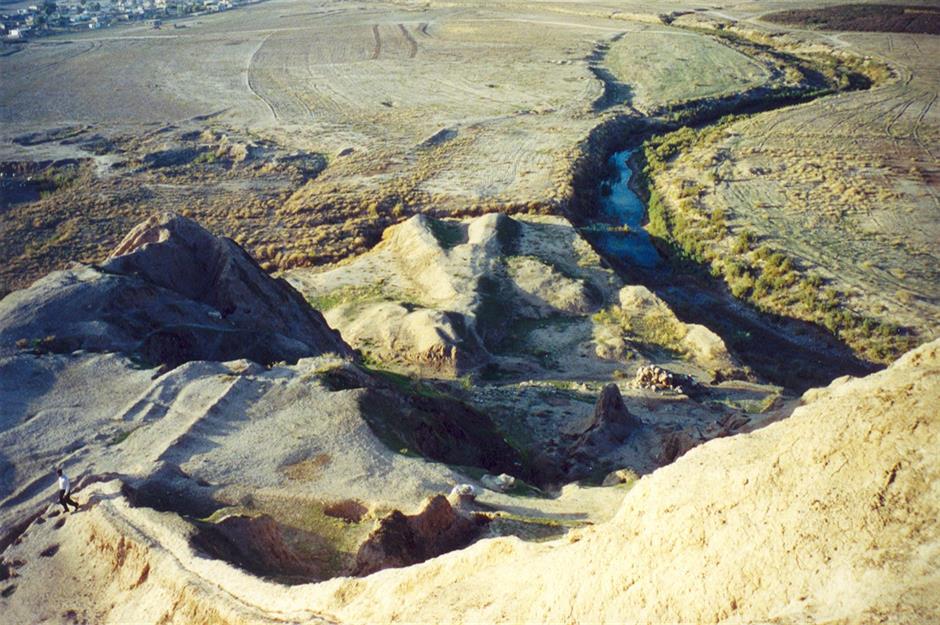
It’s a vast and famously beautiful country, where precious religious and cultural monuments and artefacts adorn a landscape of rivers, plains and mountains. First established in the 3rd millennium BC, the ancient city of Ashur (pictured) was an important centre of trade and became the first capital of the Assyrian Empire between the 14th and 9th centuries BC.
It was also the religious capital of the Assyrians, associated with the god Ashur, and the burial place for its kings.
Iraq
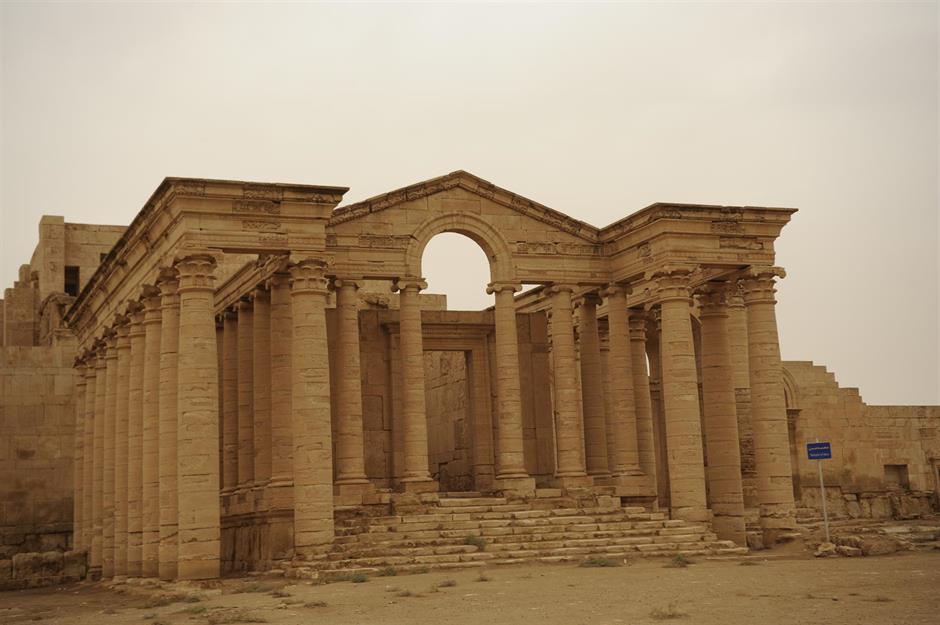
Ashur is one of a number of sites seriously at risk from a host of environmental factors, poor conservation and the dangers posed by armed conflict. Another is the fortress city of Hatra, the capital of the first Arab Kingdom dating back to the Parthian Empire in the 3rd or 2nd century BC.
It's known for its mighty walls, towers, temples and sculptures dedicated to gods including Apollo and Poseidon. The site was taken by Islamic State militants in 2015 and damaged with sledgehammers and guns. Some carvings and statues were completely destroyed.
Yemen

Travel warnings are in place advising against any travel to Yemen, due to ongoing conflict and instability. In January 2024, the UK and US carried out air strikes on a number of Yemeni targets belonging to the Houthi armed group.
The country lies on the southern end of the Arabian Peninsula, bordering Saudi Arabia and Oman. It has a long coastline and is scattered with important archaeological sites including the Old City of Sana’a, pictured, whose intricately detailed tower-houses are built with pise (rammed earth).
Yemen
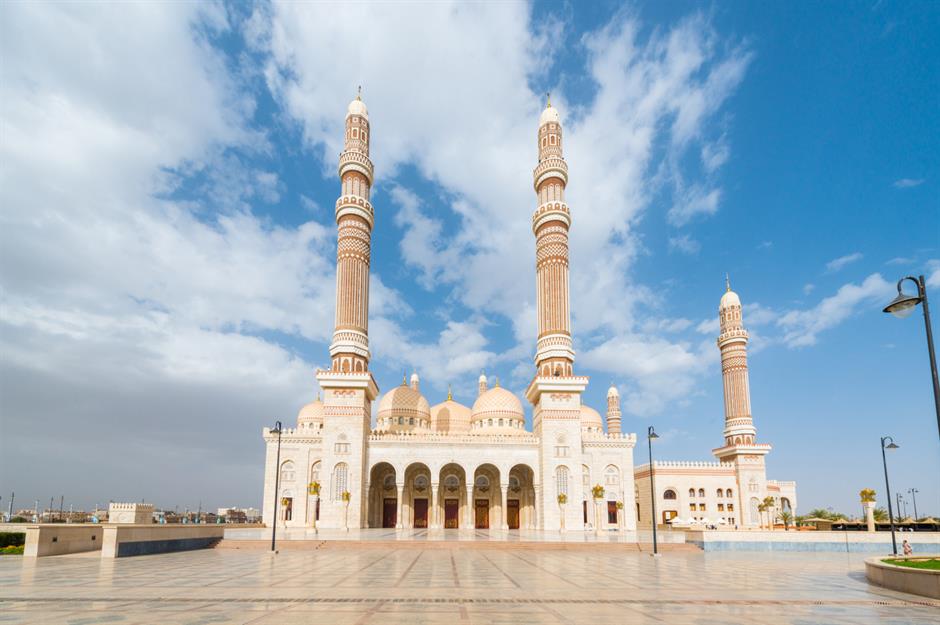
Other treasures include the medieval Bab Al Yemen gate, the 11th-century hilltop Sira Fortress and the imposing Al Saleh Mosque (pictured), built in 2008.
Yemen also has a scattering of islands, including the Kamaran archipelago and the Hanish Islands in the Red Sea, plus Perim (Barim) Island in the Bab el-Mandeb Strait, which separates the Arabian Peninsula from Africa.
Yemen

Its largest island, Socotra, is perhaps the most striking too. Its nickname is 'the alien island', referring to its ethereal and isolated beauty. Lying in the Arabian Sea, nearly 620 miles (1,000km) off the coast, Socotra is laced with beaches and home to around 800 species of flora, many of which can’t be found anywhere else on the planet.
The most distinctive are the dragon blood trees, which sprout from the arid ground like bizarre umbrellas, and bottle trees (pictured).
Syria
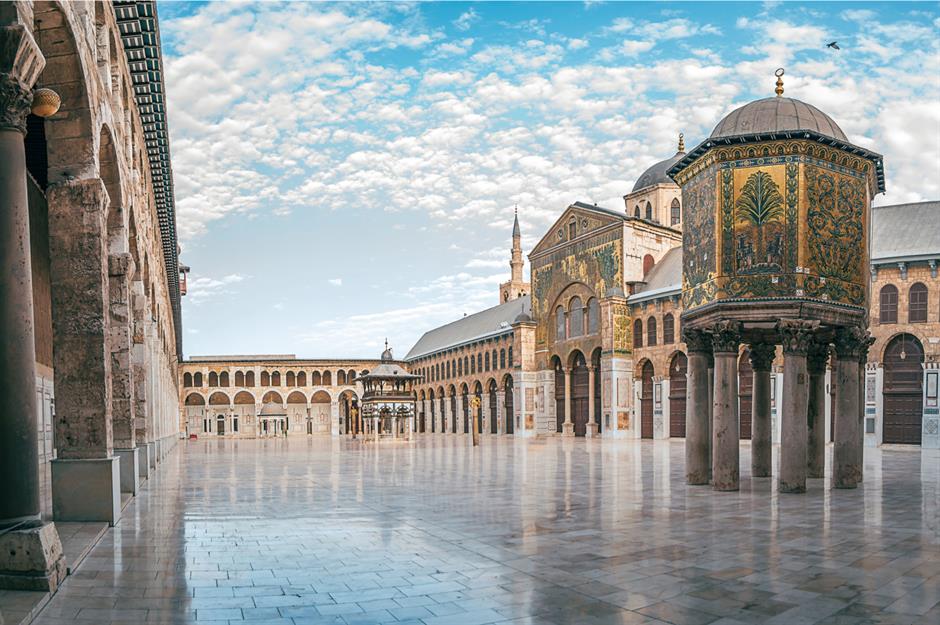
Syria remains a no-go destination as civil war has been ravaging the country since 2011. Both the FCDO and US State Department have their strongest possible warnings in place, advising against all travel.
The country is home to many important archaeological, cultural and religious treasures, including the Great Mosque of Damascus (pictured). Located in the capital city and also known as the Umayyad Mosque, it’s one of the largest and oldest mosques in the world.
Syria
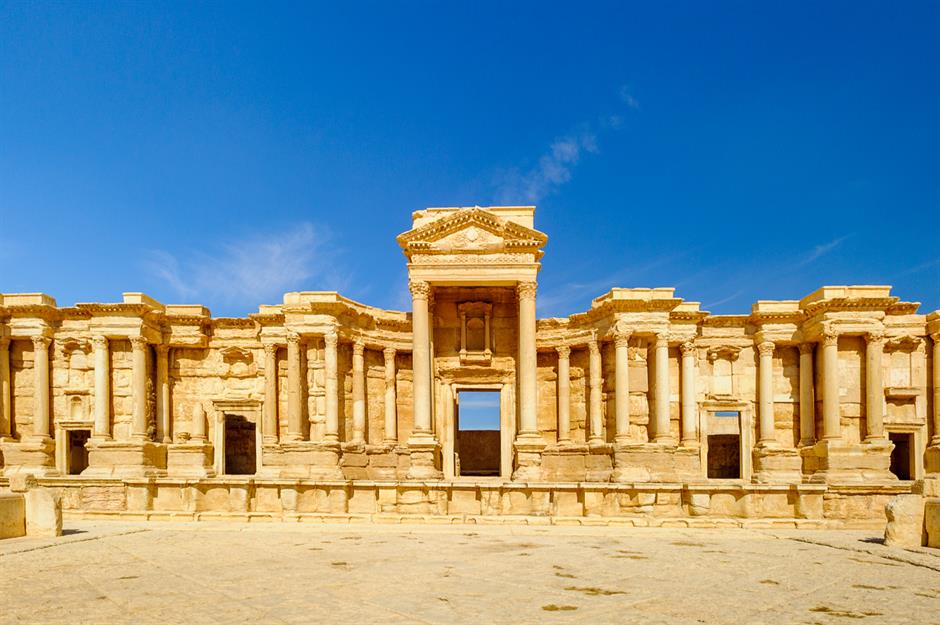
Many archaeological wonders have also been irrevocably and, in some cases, intentionally damaged by the jihadist group Islamic State. These include the ruins of the ancient desert city of Palmyra in Homs province, which dates from around the 1st century AD.
The site, on the historic Silk Road route, has lost monuments such as the Temple of Baal, dedicated to the Mesopotamian god Baal, and the Arch of Victory. Parts of Palmyra's Roman Theatre (pictured) have also been destroyed.
Syria
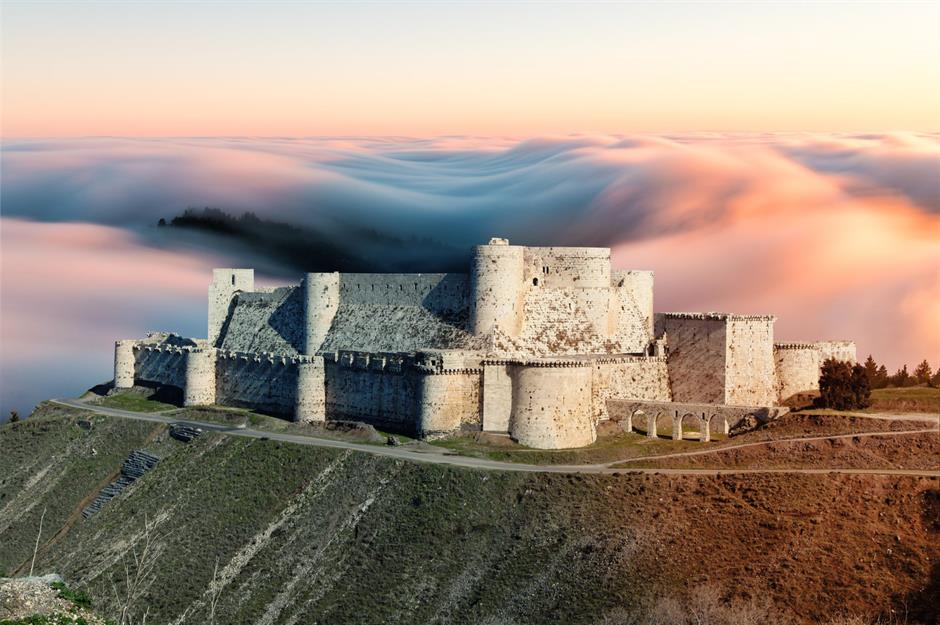
The hilltop castle of Krak des Chevaliers, built for the Emir of Aleppo in 1031, is believed to remain largely intact despite weathering centuries of conflict. The huge, fairytale-like fortress is considered one of the world’s most important and best-preserved medieval castles.
Along with another nearby medieval fortress, the Qal’at Salah El-Din, the limestone castle (pictured) forms one of Syria’s six World Heritage Sites and has been placed on UNESCO’s endangered list.
Russia

Following Russia’s full-scale invasion of Ukraine on 24 February 2022, the FCDO and US State Department continue to urge their citizens not to travel to Russia under any circumstances. Retaliatory drone attacks, bombings and armed incursions have been reported in parts of western and southern Russia, including in major cities like Moscow and St Petersburg.
Prior to the conflict, these two cities were the country's most visited destinations, sporting striking landmarks such as St Basil’s Cathedral (pictured) and the Winter Palace respectively.
Russia

St Petersburg, known as Leningrad in the days of the Soviet Union, has been touted as 'the Venice of the North'. Its impeccable historic centre and related monuments, such as the opulent Winter Palace and Hermitage Museum (pictured), were inscribed by UNESCO in 1990.
The city has witnessed great tragedy in its three-century-long life, from the Russian Revolution to World War II, and now finds itself embroiled in conflict once more.
Russia

It’s not just urban marvels that we might never get to experience in Russia. Europe’s largest country is also home to its largest lake, Ladoga, as well as the oldest and deepest lake in the world, Lake Baikal.
Located in the remote reaches of Siberia, the lake (pictured) is 25 million years old and contains 20% of the world’s unfrozen fresh water. UNESCO calls it 'the Galápagos of Russia' on account of its exceptional isolation and unique biodiversity. Elsewhere, primeval volcanoes and virgin forests blanket parts of this off-limits nation.
Ukraine
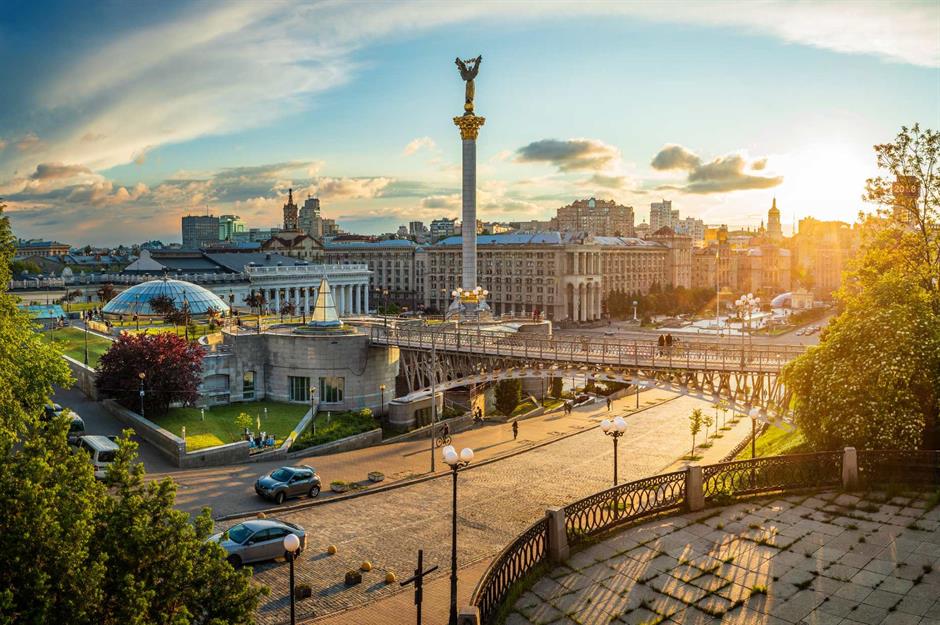
When Russia attacked Ukraine’s capital Kyiv and its second-largest city Kharkiv at the beginning of 2022, it set in motion a devastating chain of events that has killed thousands of civilians and displaced millions more. As active armed conflict between the countries continues, the UK and US have issued strong warnings regarding travel to Ukraine.
America has its highest Level 4 "do not travel" order in place for most of the country although certain areas considered a lesser risk are at Level 3 – “reconsider travel.” Likewise, the UK advises against all travel to most of the country and all but essential travel to the rest.
Ukraine

As of November 2025, 512 cultural sites in Ukraine have been damaged to some extent since Russia’s invasion began, according to UNESCO. This includes 83 sites in the Kharkiv region alone, from churches and libraries to museums and art galleries.
Tragically, the 11th-century Saint-Sophia Cathedral (pictured) – designed to rival the Hagia Sophia in modern-day Istanbul – which had remained unscathed for most of the war, was damaged in October 2025 when a blast wave destroyed the cornice on the central apse of the cathedral. It had previously been placed on the List of World Heritage in Danger.
Ukraine
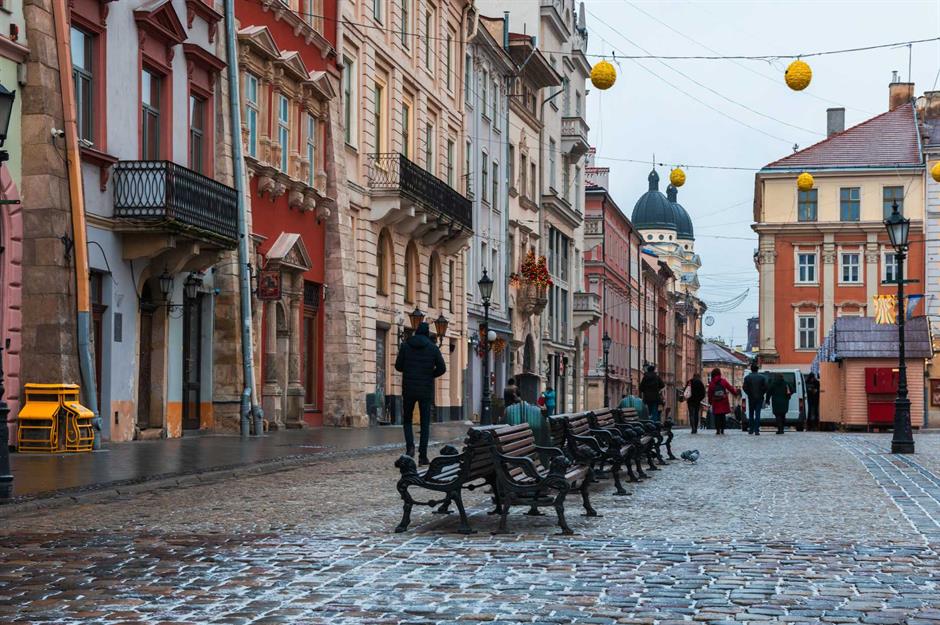
The city of Lviv in western Ukraine has also had its historic centre (pictured) listed as endangered by UNESCO, given that "optimal conditions are no longer met to guarantee" its protection in the midst of the war. Founded in the mid-13th century, it’s a melting pot of Eastern European architectural and artistic styles from the Middle Ages, which were influenced by trends in Italy and Germany.
The oldest parts of the city, whose origins date back to the 5th century, are the Vysokyi Zamok (High Castle) and Pidzamche (the castle’s surrounding area).
Israel and Palestinian Territories
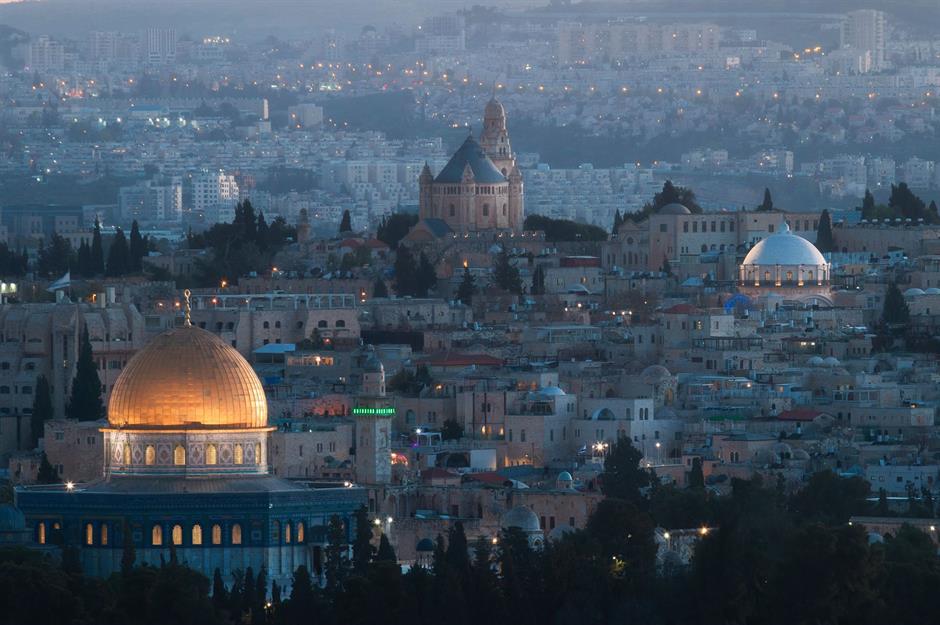
The conflict between Israel and Palestine is one of the longest-running in the world. The century-long struggle for power in the occupied Palestinian territories escalated in October 2023, when Israel declared war on the Gaza Strip after the armed Palestinian group Hamas launched an unprecedented assault on southern Israel.
The FCDO currently advises against all travel to Gaza and the vicinity around its border, parts of the West Bank and parts of northern Israel and Occupied Golan Heights. The US State Department says not to travel to Gaza and areas of Northern Israel and to reconsider travel to the rest of Israel and the West Bank.
Israel and Palestinian Territories
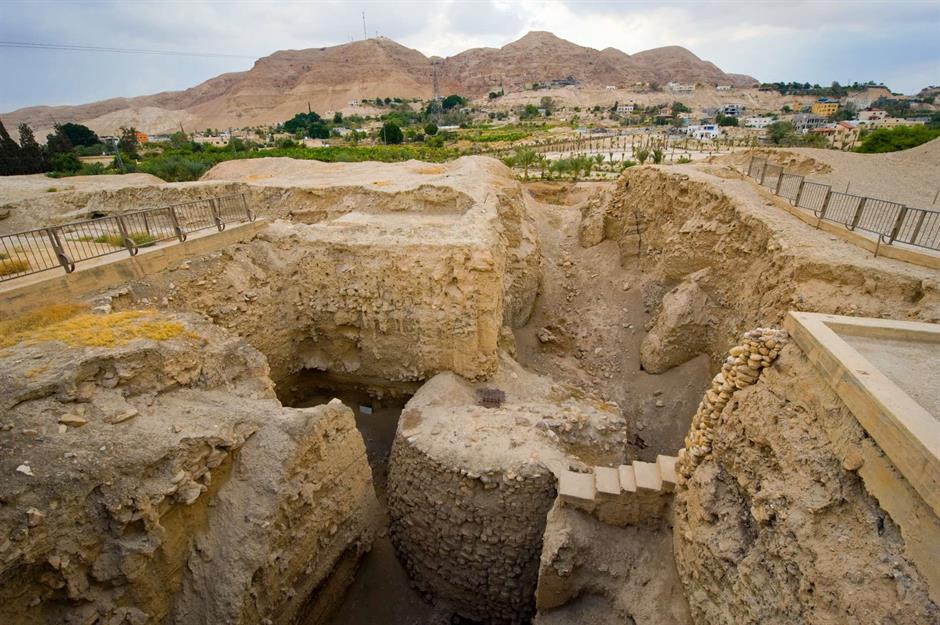
Located in the West Bank, Jericho is often cited as the oldest continually inhabited city in the world. Though the destruction of its ancient fortifications was made famous by the ‘Battle of Jericho’ Bible story, the city’s history goes back even further to between 9000 and 8000 BC, with archaeological evidence of some of the world’s earliest civilisations and permanent human settlements.
The ruins of Ancient Jericho/Tell es-Sultan (pictured) became a UNESCO World Heritage Site in 2023, shortly before the October attacks.
Israel and Palestinian Territories
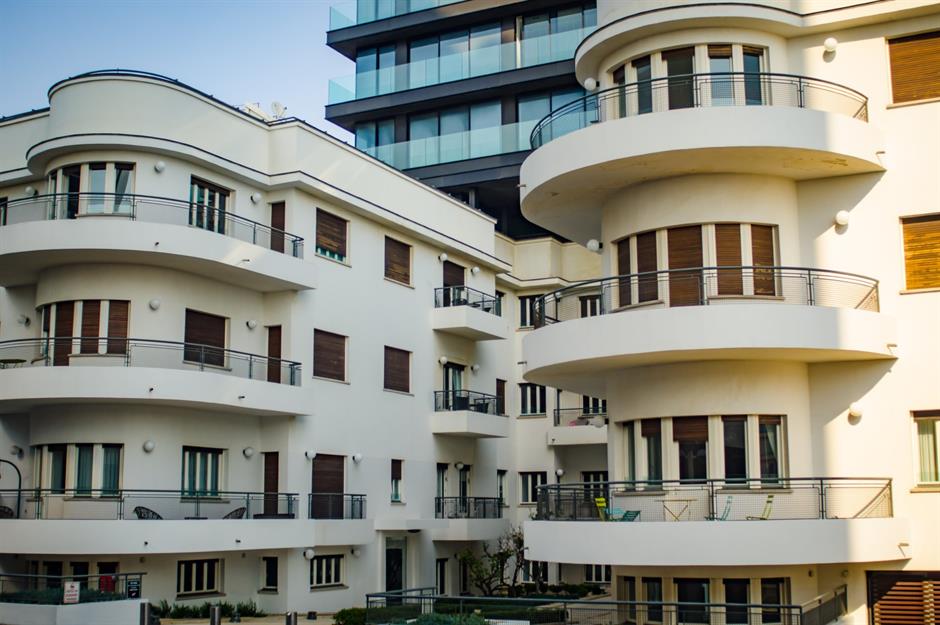
Though Israel quit UNESCO in 2019, it still has nine properties inscribed on the World Heritage List. One of these is the White City of Tel Aviv (pictured), which represents the largest concentration of Bauhaus architecture in the world.
This part of the city, largely designed in the 1930s by a collective of 200 architects fleeing Nazi Germany, consists of some 4,000 Modernist buildings.
Now check out these sobering before-and-after images of landmarks destroyed by war
Comments
Be the first to comment
Do you want to comment on this article? You need to be signed in for this feature